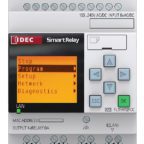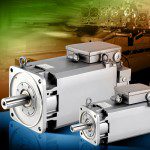Today’s state-of-the-art PC-based controls deliver performance that exceeds most industrial machine-control requirements. Processor power and memory continue to expand — following Moore’s Law and doubling in capability every couple years. What’s more, cost per processor continually declines as performance increases. Whenever control manufacturers update their electronics, it makes more power available to end users.
Here’s how PC-based control selection works: First list all the inputs and outputs the application needs. Then make a list of all functions and interconnections the application needs. Don’t overlook smart devices and interconnects. When using a passive display with an HDMI, ensure the latter is available, or get a converter to make all system connections work. Here, a system-hardware architecture diagram is a helpful tool that facilitates BOM writing for quoting control-system components. In addition, go through the subsystems and consider the following.
PC-control software support
The application software should be compatible with the PC controller’s operating system. Linux or Windows CE operating systems are the two most common. Consider if there’s an installed base of other software in the manufacturing operation … and what compatibility issues may arise. If the system uses ladder logic, check to see that the Ladder Editor works with the OS and ensure the version has all features the control application needs.
PC-control communications capability
Modern controls are increasingly connected to an IT network. So whether it’s Ethernet or a proprietary network protocol, ensure the PC supports this aspect of the controls. Intelligent subsystems such as vision or specialty motion systems need local network support within the controller.
I/O constraints in controls
Setup of inputs and outputs is sometimes complex. For example, when using a linear motor with high-resolution linear scales and moving at a high rate of speed, quadrature encoder data may exceed the megahertz range. Stable high-bandwidth encoder input module may be difficult to find and expensive.
Most I/O product lines come using Ethernet as the backplane. Using PC-based controllers can be a way to leverage I/O from multiple vendors to get the best of each device for a given control requirement. Explosion-proof I/O and other specialty devices come for use with PC based controls, too. That all makes a strong case for the superiority of PC based control.
PC-control environmental constraints
Special operating conditions are a major factor for industrial control. Installations needing explosion-proof setups (as where flammable materials are present) or washdown conditions (for food industry applications) or setups that must withstand extreme cold (in outdoor equipment for use in Canada) all present unique challenges to control design.
PC-control hardware support
In the consumer market, processors and motherboards change quickly and expected product life is only two to three years. In contrast, controls in industrial environments must operate for 10 years or more — and suppliers have made great strides to support these expectancies.







Leave a Reply
You must be logged in to post a comment.